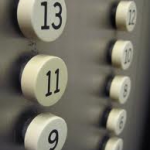The S&P500 posted, and the DJIA approached, new all-time highs at the end of October while unemployment remained at half century lows. And yet the health of the economy is so fragile that the Federal Reserve felt compelled to cut interest rates for a third time. Skeptics believe that effectively zero-to-negative interest rates is more likely to encourage corporate financial engineering than it is to encourage productive investment. Rupal Bhansali, manager of Ariel Global and Ariel International and now a member of the Barron’s Roundtable, warned that “the market, which had been on steroids, is now on opioids. That’s not going to end well.”
Headline writers, and the self-serving pundits who they channel, do have that “you say ‘crystal meth’ like it’s a bad thing” air about them. A single day’s digest from Business Insider (1 November 2019) led with these four tidbits
Forget the rate cut: BlackRock’s $1.9 trillion bond chief told us of a more significant bombshell the Fed just dropped on markets
‘I would always rather be late’: A chief researcher at a $67 billion financial giant reveals his strategy for avoiding disaster in a market obsessed with growth
Jim Rogers earned a 4,200% return with George Soros by investing in overlooked assets. He tells us what he’s buying now ahead of the ‘worst crash of our lifetime.’
‘Bad from every angle’: America’s trucking recession is now slamming one of the $800 billion industry’s largest companies
Bombshell, disaster, worst crash, slamming recession … and yet on the same day, MarketWatch trumpets:
Dow and S&P guaranteed to rise another 5% in the next two months
US stock market has a good chance to record new highs
Finally, the last bullish stock market signals falls into place
Chart analyst says new record gives investors the green light to jump back into bull market
Bull, indeed.
Tweedy, Browne’s Investment Committee offered a calm, yet near-encyclopedic, list of what might soon go wrong:
… prevailing investor anxiety is, in part, related to above-average risk asset valuations coupled with increasing macroeconomic uncertainty, not the least of which is what appears to be a slowdown in economic growth, both in the U.S. and abroad. Other potential issues currently on the horizon that could pose a threat to market confidence include, but are not limited to: a hard Brexit; escalating trade tensions with China; a long overdue recession; a military confrontation with Iran; a miscalculation by North Korea; continued unrest in Hong Kong; rising debt levels; antitrust scrutiny of some of the FAANG companies; the upcoming U.S. presidential election; and perhaps more importantly, the possibility, however remote, of an uptick in inflation and interest rates. An unexpected outcome with respect to any of these macroeconomic issues could dampen investor enthusiasm, and in turn, negatively impact risk asset valuations, shifting the teeter-totter back in value’s favor. In the interim, we suspect that market volatility is likely to remain with us, and that should bode well for bargain hunting. William H. Browne, et al, Third Quarter Commentary, October 2019
MFO’s recommendation is always the same, and is never a market call: don’t abandon the equity markets, don’t take on more risk than you can manage and keep cash reserves on hand to deploy when values erupt.
Most of us have neither the knowledge nor the fortitude to invest in the face of a market crisis. As a result, we tend to favor funds whose managers have been building cash during the market’s frothy phase; we believe it demonstrates a contrarian good judgment and offers the resources that can be deployed by a professional who doesn’t panic when, well, the rest of us do.
Our approach is to catalog for you funds that have two admirable characteristics: they have been generating solid to excellent absolute returns in the short-run but have substantial cash on hand in order to buffer, then profit from, a market crisis.
The funds below have a substantial equity component, at least 15% in cash and double-digit returns over the past year. We chose the shorter-than-usual 12-month window because it corresponds with the period of heightened market instability, which is relevant to imagining funds that can thrive in good times and bad.
I almost called these “the 10-15 funds” until I discovered that in police radio code, 10-15 signals “prisoner in custody.” I just wasn’t sure that I wanted to go there.
The final two columns are summative judgments from MFO and Morningstar. MFO’s highest designation is “Great Owl” (GO), earned by funds that finish in the 10% of their peer group on risk-adjusted returns for every period longer than 12 months. The Honor Roll (HR) designation is for fund that outperform their peers, not adjusted for risk.
The Morningstar stars are awarded in light of a fund’s past risk-adjusted returns. The medalist awards – gold, silver, bronze, neutral, negative – are a judgment, rendered either by human analysts or a Morningstar machine-learning model that tries to mimic the analysts, are a fund’s future prospects. A Gold-rate fund is one in which Morningstar has the greatest level of confidence that the fund is positioned to outperform in the future.
| Cash | 1 year return | 3 year return | AUM | Expense ratio | Minimum | MFO | M* | ||
| Akre Focus AKREX | Large Growth | 19% | 27% | 23% | 11,920 | 1.32 | 2,000 | GO + HR | 5 – Silver |
| AMG Yacktman Focused YAFFX | Large core | 26 | 13 | 13 | 3,700 | 1.27 | 2,000 | GO + HR | 4 – silver |
| Marshfield Concentrated Opportunities MRFOX | Large Growth | 27 | 27 | 22 | 112 | 1.10 | 10,000 | GO | 5 – neutral |
| Nuance Concentrated Value NCVLX | Large Value | 16 | 18 | 10 | 443 | 1.07 | 10,000 | GO | 4 – Neutral |
| Needham Small Cap Growth NESGX | Small Growth | 16 | 25 | 17 | 45 | 1.95 | 2,000 | HR | 3 – neutral |
| Sextant International SSIFX | Intl Large Growth | 26 | 19 | 13 | 109 | 1.04 | 1,000 | HR | 4 – neutral |
| Federated Kaufmann KAUFX | Mid-Cap Growth | 23 | 14 | 17 | 6,401 | 1.95 | 1,500 | HR | 4 – Neutral |
| Federated Kaufmann Small Cap FKASX | Small Growth | 16 | 14 | 22 | 3,582 | 1.35 | 1,500 | 5 -Neutral | |
| Artisan International Value ARTKX | Foreign Large Core | 15 | 10 | 9 | 14,268 | 1.18 | 1,000 – closed | 4 – silver | |
| FPA International Value FPIVX | Foreign Small/Mid Core | 34 | 13 | 10 | 247 | 1.29 | 1,500 | 4 – Bronze | |
| T. Rowe Price Int’l Concentrated Equity PRCNX | Int’l Large Core | 10 | 14 | 8 | 150 | 0.9 | 2,500 | 4 – bronze | |
| BBH Partner Fund – International Equity BBHLX | Foreign Large Growth | 20 | 16 | 9 | 1,755 | 0.65 | 10,000 | 3 -neutral | |
| Provident Trust Strategy PROVX | Large Growth | 16 | 11 | 17 | 185 | 1.00 | 1,000 | 3 – Neutral | |
| Fairholme FAIRX | Large Value | 28 | 25 | 4 | 1,090 | 0.82 | 10,000 | 1 – negative | |
| Artisan Thematic ARTTX | Large Growth | 13 | 17 | — | 691 | 1.51 | 1,000 | n/a | |
| Clarkston Founders CIMDX | Mid-Cap Core | 28 | 12 | — | 43 | 0.91 | 10,000 | n/a |
Notes on the data: all performance and fee data are current as of mid-October, 2019. The funds’ cash holdings are Morningstar data which we cross-checked with the fund’s website; in the case of a disagreeable, we went with the funds’ self-report.
Every fund name is linked either to its MFO profile or to its homepage.
A quick gloss on some of the funds:
It is exceedingly rare for large funds to hold substantial cash reserves. Their business model does not allow such caution.
Artisan Thematic and Clarkston Founders have not yet reached their three-year mark. While Artisan Thematic strikes me as quirky but the manager does have a substantial record prior to Artisan and Artisan does have a remarkable record for hiring only “category busters” to manage their strategies. The open-minded might want to investigate.
Akre Focus and Sextant International have lead managers who are (1) brilliant, (2) principled and (3) in the … uhh, later stages of their investing careers. Folks might want to get comfortable with the state of the funds’ succession planning before proceeding.
Fairholme is probably not an attractive option for most investors. It is ultra-concentrated and ultra-volatile. When the lead sentence by the Morningstar analyst covering the fund begins “Fairholme doesn’t face a liquidity crisis anymore but …” you know things are iffy.
Yacktman Focused is ridiculously, inexplicable, consistently excellent.
Bottom line
It is delusional to believe that the market will rise forever or that you will have the knowledge and fortitude to commit your cash reserves at the moment of the market’s greatest despair. That is, neither having no cash is bad and having cash that you’re incapable of deploying is bad. Our recommendation, always, is to consider managers who have the cash and have a record of managing both rising markets and tumbling ones. These funds warrant some attention for that role.
Related articles: The 15 / 15 Funds (04/2018), 15/15 funds, one year on (03/2019) and Overachieving defenders: Your late-cycle shopping list (08/2019)












